#inspired by recent feast of st Jerome
Explore tagged Tumblr posts
Text
Concept: St. Jerome with his lion but the lion is Aslan

Art by Scott Gustafson
#christianity#aslan#my beloved#st Jerome#lion#the not-tame lion needs His cuddles and pets too!#imagine Him purring! oh my oh my i think i would swoon#Scott Gustafson#might have accidentally found my new favorite illustrator#please check out his works they're beautiful#i mean look at this one it's gorgeous#inspired by recent feast of st Jerome
26 notes
·
View notes
Text
Observations on the Hierarchy Of the Guard of Priwen
The Guard of Priwen largely remains a mystery to us as the player throughout Vampyr. No matter how openly we see them patrol the streets as some form of underground night watch, we only see glimpses of their true, and supposedly resurrected power, let alone witness the history of what they were before the schism from their “cowardly” brothers, the Brotherhood of St. Paul’s Stole. As Lady Ashbury parts with us, the Guard of Priwen is a secret society, one of many in the dreary and eerie vampire underworld.
I have other plans to delve deeper into the militaristic madness that is the Guard of Priwen’s inner workings and possible historical backgrounds, but I first wanted to share this small piece regarding the one detail that is most obvious in the game: the several Mobs we encounter with their logos splattered all across it. Therefore, this will be a shorter analysis solely dedicated to the possible hierarchy within Priwen, combining datamined research, the lore, and some fun historical notes behind each and every rank!
As per usual, this analysis will have spoilers, this time all the way through! All parts of this post will discuss Vampyr’s lore in detail, so please skip if you do not wish to be spoiled!
Tagging @comfycheesecakes, @orionali, @cursedbethechoice as I imagine some of this may be to each of your interests.
To preface a starting point point: Usher elaborates on the history of Priwen’s conception when Jonathan speaks to him in the West End inside his crypt:





Usher also writes of them in the Collectible “Laughing at the Guard”, explaining their origins and beliefs from a historical point. The Collectible helps to detail the inner turmoils that founded the Brotherhood as well as the detailed purpose behind its creation:
Full screenshot
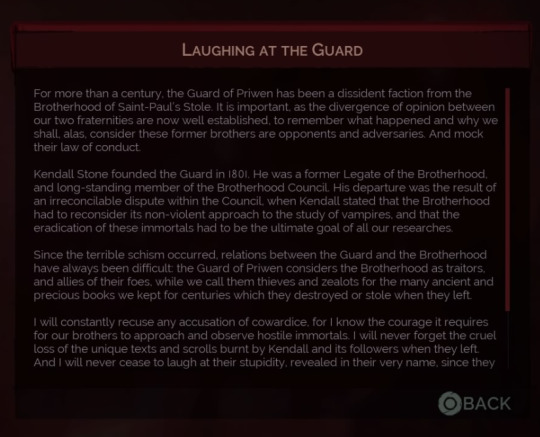
Full screenshot

This gives us a starting point to Priwen’s possible background and development. 1801 places the birth of the Guard of Priwen in the Georgian Era, beginning from 1714 to circa 1830 - 1837.
You will also see a militant trend following Priwen which is also an obvious fact in game but characters like Archer Woodbead in The Docks or Dorothy Crane in Whitechapel, both in Districts with the highest concentration of Priwen, this is a very visible trend for those around them:


Dorothy’s exchange occurs if you Spare her as Jonathan, revealing a harrowing fact about Priwen’s encroaching behaviour in their fanatical fear of keeping any sign of vampire activity eradicated. Beforehand, Priwen guards burst in to the Dispensary regardless of your Pillar Choice as Jonathan, with the patients downstairs being shot to death should you check again with Senses. The bodies no longer have visible heartbeats.



When Jonathan begins to gain access to the rich streets of the West End, it, too, struggles to avoid Priwen’s influence with not only their guard presence, but also their criminal presence!
Inspector Charles Jerome Albright will speak to Jonathan about the recent happenings and murders in London, claiming that there are:

Jonathan has the option to then report a possible suspect, one of these being Geoffrey McCullum, the current leader of Priwen:

If you choose McCullum, Jonathan calls Priwen a group of “vigilantes”; a vigilante is someone, or a group, who attempts to enforce laws (or their ideas of what is law) without the authority to do so.


With this very worrying trend now established, let us fully move onto dissecting Priwen’s inner workings!
GUARD OF PRIWEN
What’s interesting to note is that a lot of the current enemies in GoP have different names depending on where you look—from either the canonical versions in the game themselves, to the game files, or even the concept art. I will be looking at all three sources for any comparisons!
PRIWEN
To begin dissection—I will first begin with the titular names of each organisation for each of their respective sections, beginning with the Guard of Priwen. “Priwen” is a reference to Geoffrey of Monmouth’s (Latin: Galfridus Monemutensis, Galfridus Arturus, Welsh: Gruffudd ap Arthur, Sieffre o Fynwy) Arthurian legend titled “The History of the Kings of Britain”, or “De gestis Britonum” (On the Deeds of the Britons) or Historia regum Britanniae”, written circa. 1136.“Priwen” is the name of King Arthur’s shield, hence, the Guard of Priwen:
“Without a moment’s delay each man present, inspired by the benediction given by this holy man, rushed to put on his armour and to obey Dubricius’ orders. Arthur himself put on a leather jerkin worthy of so great a king. On his head he put a golden helmet, with a crest carved in the shape of a dragon; and across his shoulders a circular shield called Priwen, on which there was painted a likeness of the Blessed Mary, Mother of God, which forced him to be thinking perpetually of her.” — Legends of Arthur, Richard Barber, 2003.
Arthurian myth utilized in several aspects of Vampyr, with this being one of the more prominent examples. The symbol of Priwen is also referencing this myth, as it resembles a Latin cross with a circle to represent a shield:
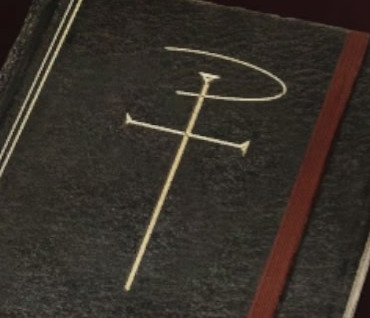
LEADER
This is relatively standard, but we do know that the head of the Guard of Priwen is always referred to as “leader”, as the notes done by Geoffrey McCullum and Carl Eldritch thus far are denoted by “leader”; the only exception is reserved for Kendall Stone who is also denoted as “Founder”. “Leader” is rather self-explanatory, as it simply means “someone who leads a group”. Interestingly, it also seems to be used for those who are not the head of Priwen either, as we see in the scouting note during Thelma’s side-quest: a female “team leader” who went by Amanda Tilton. This seems to indicate there is no specific or official title to discern the head of Priwen, perchance making “leader” more of slang or casual terminology that merely stuck through the generations. The below are either written manuscripts by the leaders themselves, or copies from another.
Full screenshot

Kendall Stone’s denotation and signature:
Full screenshot


Carl Eldritch’s denotation and signature:
Full screenshot


Geoffrey McCullum’s denotation and signature:
Full screenshot


CHAPLAIN/SHEPHERD/PREACHER
(For the purpose of relevancy, I will mostly be focusing on the Chaplain terminology as that is the canonical one we see in-game, but will still be examining the Chaplain’s alternative terms and their origins.)
Chaplains are curious. You do not see them until much later in the game (other than certain exceptions regarding side-quests), there are two versions of them according to the game files, that being the Shepherd_Preacher and the Shepherd_Fanatic, but only one model, the Fanatic, remains in the game. Shepherd_Preacher is the first version of the Chaplain which we see in the E3 2017 Trailer. Their enemy busts are below; the model shown in the game files is only of the Fanatic:

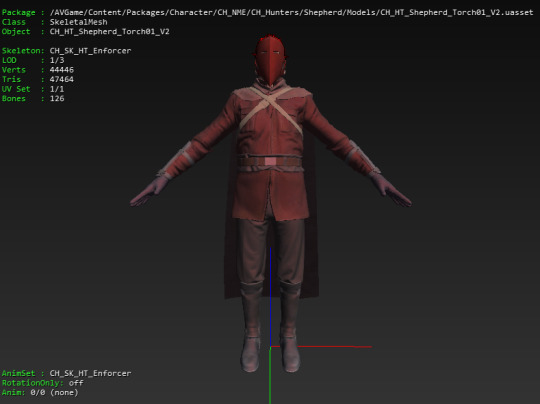

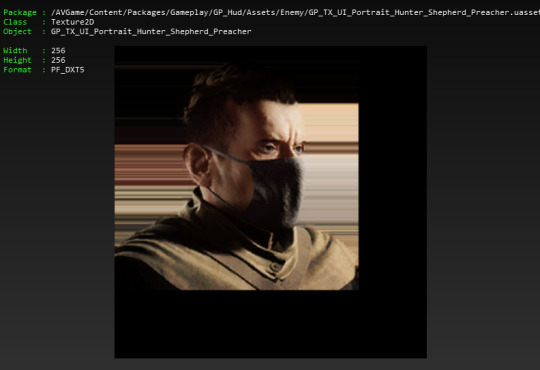

Concept art also reveals them being originally labelled as “Preacher”, with a single exception being that sometimes, the loading screen within the game will use the title:

Florent Auguy
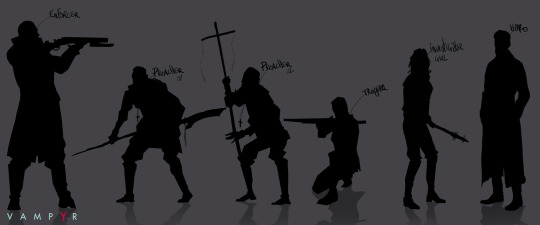
The word “chaplain” is borrowed from Old French “chapelain”, which in-turn stems from the Medieval-to-late Latin “cappellānus” that also hails from a Medieval Latin to Late Latin word read as “cappella”. Notably, “cappella” is defined as a chapel or a choir. The story of chaplains themselves hail from a 4th-century practice:
In the 4th century, chaplains (Latin cappellani) were so called because they kept St. Martin’s famous half cape (cappella, diminutive of cappa). This sacred relic gave its name to the tent and later to the simple oratory or chapel where it was preserved. To it were added other relics that were guarded by chaplains appointed by the king during the Merovingian and Carolingian periods, and particularly during the reign of Charlemagne, who appointed clerical ministers (capellani) who lived within the royal palace. In addition to their primary duty of guarding the sacred relics, they also said mass for the king on feast days, worked in conjunction with the royal notaries, and wrote any documents the king required of them. In their duties chaplains thus gradually became more identified with direct service to the monarch as advisers in both ecclesiastical and secular matters.
In modern usage, a chaplain holds a strange position within the religious circle they reside in, most notably because the definition of a “chaplain” is a cleric who is assigned to a secular institution such as a hospital, prison, military forces, universities, and so on.
n. A member of a religious body (often, but not always, of the clergy) officially assigned to give pastoral care at an institution, group, private chapel, etc. A person without religious affiliation who carries out similar duties in a secular context.
…
Clergy and ministers appointed to a variety of institutions and corporate bodies—such as cemeteries, prisons, hospitals, schools, colleges, universities, embassies, legations, and armed forces—usually are called chaplains.
Often they are considered a religious leader or some form of a figurehead, with some chaplains previously being leaders of a chapel before their assignment to a different institution. Given Priwen’s circumstance of being an underground militia, the usage of the word makes perfect sense as the Chaplains of Priwen seem to hold the same responsibilities of real-life, in this case, military chaplains (as they are called) who serve in the armed forces (the concept of allowing religious figures into battle, to this day, still holds much controversy), or we can at least assume they do some of the following which are:
A chaplain performs basically the same functions in most armed forces. A chaplain in the U.S. military must furnish or arrange for religious services and ministrations, advise his commander and fellow staff officers on matters pertaining to religion and morality, administer a comprehensive program of religious education, serve as counselor and friend to the personnel of the command, and conduct instruction classes in the moral guidance program of his service.
Beyond that, a “shepherd” has a variety of religious messages but to keep it short: “shepherd” stems from the Middle English word “schepherde” to the Old English “sċēaphierde” which is a mixture of the two words “sċēap” (”sheep”) and “hierde” (”herdsman”). A female version of the word is a “shepherdess”. The word itself has multiple sorts of definitions, with a rather funny one to think about at times:
n. A person who tends sheep, especially a grazing flock. (figuratively) Someone who watches over, looks after, or guides somebody. (figuratively) The pastor of a church; one who guides others in religion. (poetic) A swain (”young man”); a rustic male lover.
A “preacher” is as it sounds: someone who spreads their worldview or philosophy. In this case, it would be perhaps a gospel or a sermon. From the Old French “preecheor” (”prêcheur”), to Latin “praedicator” (”public praiser”, “proclaimer”). A female preacher is known as a “preacheress”.
EXECUTIONER/TRAPPER
Executioners, or Trappers as the concept art referred them as (see above), are the crossbow snipers wearing red, hooded garbs, able to throw gas grenades and flaming bolts, bereft of any melee resistance whatsoever. According to the game files, there are three types of Executioners. Here are the files:
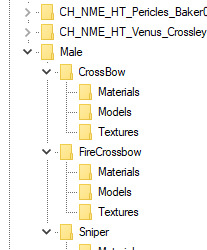
Alongside their respective busts labelled Chemical, Fire, and Wood, their models are instead labelled CrossBow, FireCrossbow, and Sniper:





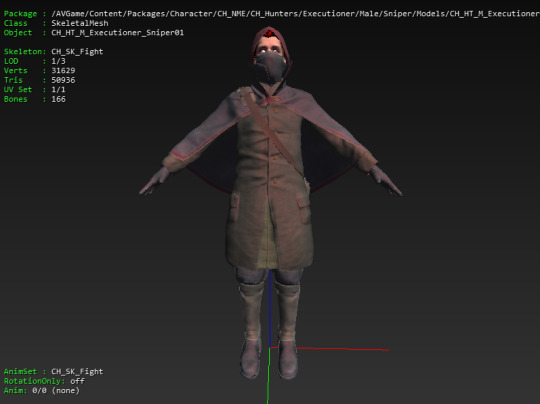

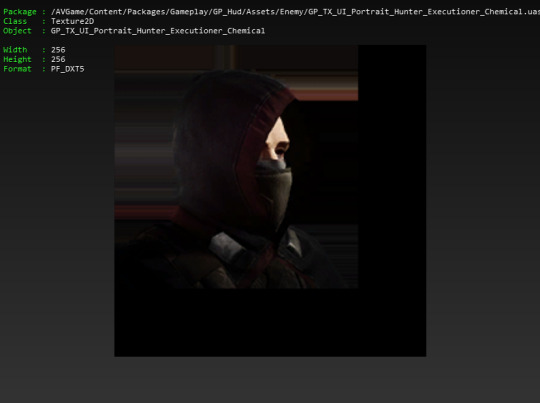


The word “executioner” is a combination of the words “execution” , which is borrowed from Old French “exécution” (c. 1360) of the Latin “executio”, an agent noun (a word deriving from another word that denotes an action of some sort), of “exequi” (”to follow out”) which stems from “ex” (out) and “sequor” (”follow”) and of course, “-er”, from Middle English “-er” and “-ere”, as well as Old English “-ere”, and Proto-Germanic “-ārijaz” used as a suffix. “Executioner” is also a fairly self-explanatory definition; it literally means “one who executes”, but to ensure that we are being thorough:
n An official person who carries out the capital punishment of a criminal. (archaic) Executor (one who conducts a task). A hit man, especially being in some organization.
An “executioner” was historically seen as a “hangman” or “headsman”—a reference to the practice of execution via. means of public decapitation. This, alongside the file name of “Sniper”; the fact that the Executioner is only ranged, defined as “hit man, especially being in some organization” and that beheading would often result in instantaneous death, the choice of title is very distinct. Like beheadings, a sniper aims to kill with a single action—an underleveled Jonathan will easily be one-shot by an Executioner from afar, making their name strikingly fitting. The fact that they are a part of Priwen, an “organization” of sorts that specializes in executions of the undead, is simply a fond, bloody coincidence.
In comparison, a “trapper” is, well, one who “traps” something, often animals for their hides or other precious materials. This may be an insinuation that literal traps of some kind were going to be added to the final product but were inevitably cut out. It does, however, fit Priwen’s perception of vampires—that they are feral animals to entrap and be rid of.
INVESTIGATOR
This will be short, as it is a term used in the game files and concept art for three ranks od Priwen, which happen to be the most squishy of mobs: Priwen Rookies (Rookie), Priwen Cadets (Veteran), and Priwen Gunners (Range).

“Investigator” is also self-explanatory: “one who investigates”, which is to say:
v. (transitive) To inquire into or study in order to ascertain facts or information. to investigate the causes of natural phenomena (transitive) To examine, look into, or scrutinize in order to discover something hidden or secret. to investigate an unsolved murder (intransitive) To conduct an inquiry or examination.
Said to have derived from the mid-1500s, from Latin “investigator” which hails from “investigare”. Interestingly, we know that female versions of each of these models exist in the game files apart from NPCs, confirmation of a female “leader” as shown above, as well as hearing female voices in the Prologue of Vampyr when Jonathan must escape the mass grave at dawn. Women were shown in the Alpha iterations of the game. Elwood confirms the presence of women in Priwen if you speak to him soon after Edgar’s kidnapping:

The feminine usage of this word is known as “investigatrix”, from Latin “investīgātrix”.
ROOKIE
Rookies are the most numerous types of enemies within the game as well as the first one you encounter within the Prologue. They only use melee weapons and hold resistance to Ranged Attacks. The sheer amount of them you find are most likely a reference to the Guard’s revitalized state in the wake of the Skal Epidemic. Ashbury mentions that Priwen was “almost gone” before Priwen began its new wave of mass recruitments:


Jonathan will frequently hear references to this mass recruitment when wandering around idle Guards:

“Rookie” is also a rather simple word to dissect: an altering of the word “recruit” and “-ie”. There is also a possibly Dutch origin from the word “broekie”, short for “broekvent”, lit. meaning “a boy still in short trousers”, which explains why “rookie” is often used as a sort teasing term. To be technical:
n. plural “rookies”
An inexperienced recruit, especially in the police or armed forces. A novice.
As the first definition shows, it does have some bearing to Priwen’s overall trend of having a nomenclature relating to militaristic forces.
The Rookie’s respective enemy UI portrait and model:

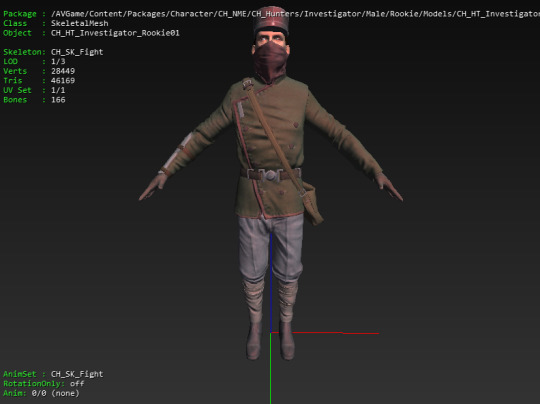


CADETS/VETERANS
Cadets, or Veterans as the game files name them, are essentially Rookies with guns or flaming torches, only being somewhat tougher than fresh-blooded Rookies. This can be inferred as a progression in rank—a Rookie that’s survived their first couple of nights on patrol. They certainly look more well-garbed, and the term “veteran” also fits with this idea of experience alongside surviving the dreary, vampiric-ridden streets.
The Cadet’s enemy UI and model:

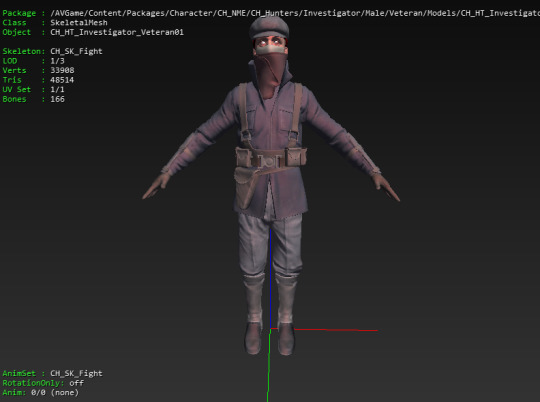

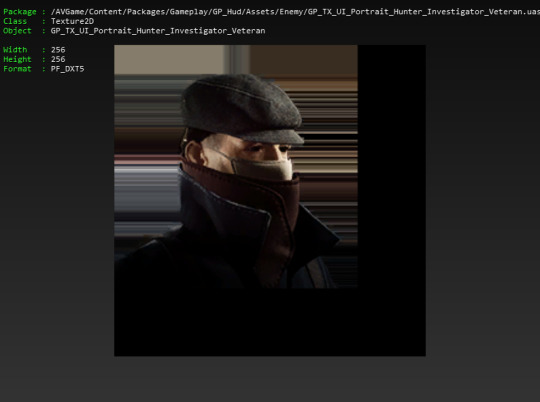
An interesting feature to note at this point about each of Priwen’s enemies is that the majority of them seem to have an undercut. At the time (and even now), undercuts were done on men deployed to the war as the militaristic style of the era—Jonathan and McCullum share ones of their own. This hints to Priwen’s military connections that many NPCs remark on (as shown above) and that some of Priwen’s members do hail from military backgrounds which are demonstrated in their extreme firepower and access to various parts of the city.
“Cadet” stems from French “cadet” from a southwestern French known as Gascon Occitan “capdet”, further back into the Late Latin “capitellum” (”headling”) shortened version of “caput” (”head”), sharing English form by 1634. “Cadet”, unsurprisingly, is also a term with military usage. The female version would be spelt “cadette”. It also holds a definition for “junior”:
n. plural cadets
A student at a military school who is training to be an officer. (largely historical) A younger or youngest son, who would not inherit as a firstborn son would. (in compounds, chiefly in genealogy) Junior. (See also the heraldic term cadency.) a cadet branch of the family
“Veteran” is borrowed from Middle French “vétéran”, of Late or Vulgar Latin “veterānus” of the word “vetus” (”old” or “aged”). It is a rather official word referencing one who has served in the military or armed forces, most specific to older soldiers or those who have seen long years of service. While the age of Priwen’s Guards can certainly be up for debate—Cadets, while relatively squishy, seem to be what Rookies advance to should they survive their first nights at the mercy of patrols, facing whatever awaits them during it.
GUNNER
Gunners are another frequent, early mob of Priwen that you encounter. They are about as numerous as Rookies and equal in their frailty, only they seem to be Rookies with more additions to their design and opt to only use Ranged Attacks, much like their fellow Executioners. The portrait shows no difference as it is a reused UI bust, but their outfits differ slightly.

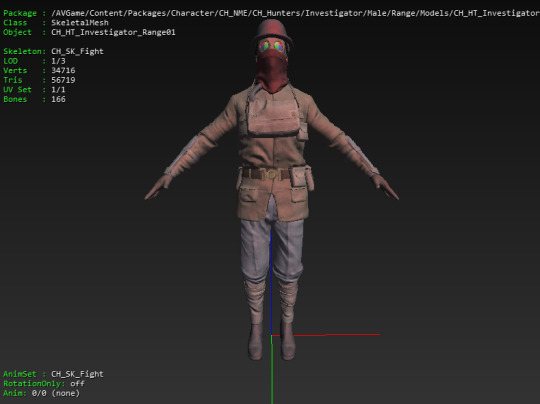

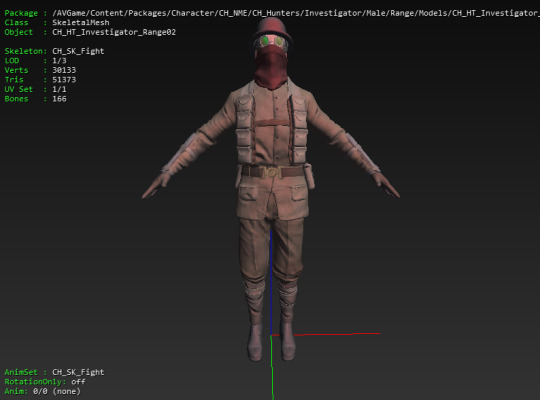


“Gunner” sounds straightforward but does hold a military usage. One can literally define “gunner” as “someone who uses a gun”, but the word itself is a rank used in the British Army Royal Artillery. It is abbreviated as “Gnr”, and is equivalent to the military rank of a “Private”, which makes sense. They hold similar stats to Rookies, Rookies are stated to essentially be new recruits—privates usually act as the lowest, entry-level rank in the military after training has completed, which means that Gunners, too, are on par with Rookies in terms of Priwen’s hierarchy.
BRAWLER/ENFORCER
Brawlers are quite the mixed bag of things. There are three different variations of them in the game files, are seen relatively early in the game, and serve as the brutish powerhouses Jonathan has to face when running into more of Priwen’s hordes. We seem them with heavy guns, a shield on their left arm, gas, and flames. A wide assortment of anti-vampire materials is cast onto a single kind of member, which proves interesting. In the game files, they are known as Enforcers with three names: Flamer, Ram, and Shield (”Tank” seems to be used generally amongst all of them for clothing files).

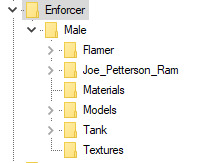
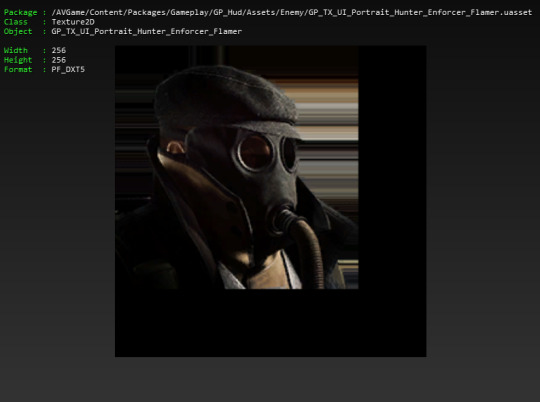
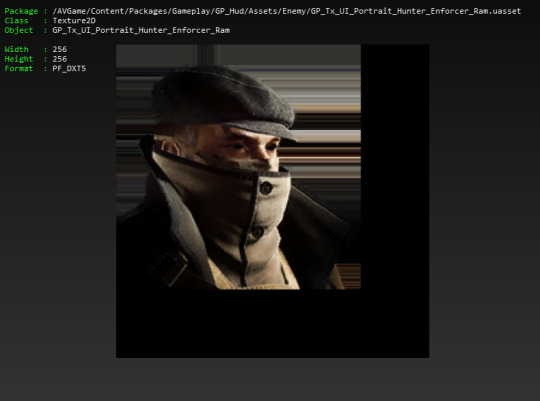

“Brawlers” is defined as “one who brawls”, which is to say: “fight or quarrel”—of Middle English “braule” and “brall” (”brawl, squabble”) of earlier “braulen” and “brallen” (”to clamour, boast, quarrel”). Similar words from Middle High German (”prālen”; “to boast, flaunt”)), Low German (”brallen”; “to brag”), Dutch (”brallen”; “to boast”), and Danish (”bralle”; “chatter, jabber”) have also been considered, whose meanings make sense. Priwen’s guards hold no shortage of leech-related insults, but the Brawlers have quite the large assortment of them out of every other Guard member. A show of their imposing sizes and statures, I would wager. However, their large array of weapons, brute force, and usage of miniature bosses imply that Brawlers are quite high on the ranking list. Chaplains are the only thing larger than them, and it has been established that Chaplains are sort of seen as pious, leading figures. Consider this when taking a look at the game files term for Brawlers: Enforcers.
“Enforcers” is a combination of “enforce” and “-er”, with “enforce” coming from Old French “enforcier”, of the Late Latin “infortiāre”, from “in-” and “fortis” ((physically)“strong”)). I emphasize this word for the Brawler for one definition in particular:
n.
One who enforces. The member of a group, especially of a gang, charged with keeping dissident members obedient.
Ram is also a reference to a battering ram (and the ability in which they charge at you) used in the British Police Forces. The second definition is specific to a Mob Enforcer. Priwen has access to multiple parts of London, with heavy access to firepower, large numbers, and seemingly free reign once night comes, kept entirely away from law enforcement. This is what discerns Priwen from a gang per say—their power and influence put them upwards to that of a Mob, or a “traditional gang” which is essentially a gang with overarching influence upon a region, to the point that they nearly act as the local law enforcement. Multiple mobs/traditional gangs existed, some of notable fame, throughout the Victorian Era well into the World Wars, many of which centred in the East End much like Priwen is: Peaky Blinders, Birmingham Boys, the “Sabini” gang, Hoxton Gang, The Yiddishers, and several others.
Brawlers essentially being Mob Enforcers must mean they hold a lot of trust within Priwen to both be given the position of watching the other men, as well as proving they can also follow through with said position.
With all of what we know of Priwen now defined, here is a chart of what I believe to be the hierarchical structure within the Guard of Priwen from what we have gathered:
Full image

As Ashbury says: like all good societies, Priwen is still very much a secretive one even with such open recruitment. There may be inner workings we are unaware of, and what we have been revealed to may only be scratching the surface of what truly hides within the esoteric, fanatic-hunting organised Mob that Priwen has built itself into. Worse more is the mystery behind their schism with the Brotherhood: a once united group, now a duality that remains incessantly at odds. The way the current Brotherhood organises themselves is much more esoteric and theological than that of militaristic Priwen, a further representation of their dichotomy being at odds.
CREDITS:
None of this data collection would have been possible without the informative help of @wolfsirius and @orionali. Of course, I will never write a post without thanking @cursedbethechoice for their initial, contributive works to the lore of this fandom and for continuing to inspire me throughout.
The tool I used to view these files was from Gildor’s Umodel Viewer.
EXTRA COMMENTS:
This essay is exactly 3,724 words long!
It’s been quite a long while since I’ve written anything despite being active on the blog. Nearly a year now! I’m hoping this small introduction allows me to ease my way back to the projects I wanted to share (which are a lot) both here in full, and show peeks of on Twitter! Thank you to those who have continued to follow this blog despite the time gap. I hope to be much more frequent with Lore posts here!
You may notice a tag at the bottom labeled “secret societies series”. That is because I intend to have a small series of analyses dedicated to the three major factions we witness in Vampyr: The Guard of Priwen, The Brotherhood of St. Paul’s Stole, and The Ascalon Club. This will be the catch-all tag for any analyses relating to those topics! …With a possible mention of the Druid Order (mentioned in the “Blood Goddess Heresy” Collectible).
Other “series” are still in the works!
Full screenshot
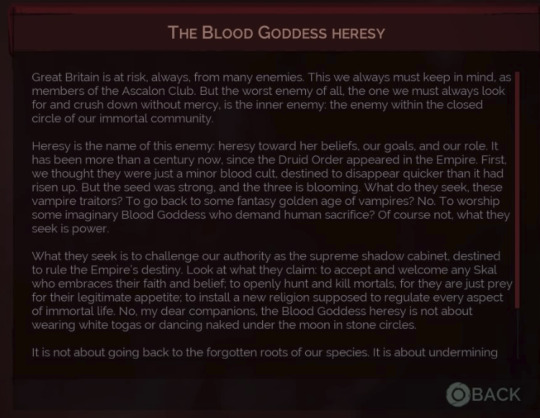
Full screenshot

ALL SOURCES/BIBLIOGRAPHY (in no particular order):
Legends of Arthur, Richard Barber, 2003 “GANGS”, Bill Sanders, February 2016 — Oxford University Press Chaplain, ENCYCLOPÆDIA BRITANNICA Oxford English Dictionary Merriam-Webster’s Online Dictionary Wiktionary Online Etymology Dictionary The British Army Website’s British Army Structure London Metropolitan Police’s Article of the Enforcer Wikivisually’s Article on the Enforcer (battering ram) Etymology of “Chaplain” – Traditional & Professional, Rev. Dr. Michael G. Maness, 1998, revised 2015, formerly published as “Meaning of Chaplaincy” The etymology of “rookie” in Wikitionary The etymology of “chaplain” in Wikitionary The etymology of “brawl” in Wikitionary The etymology of “enforce” in Wikitionary Online Etymology’s Dictionary’s Page on “enforce” The Mob Museum in Las Vegas—National Museum of Organized Crime & Law Enforcement Online Etymology’s Dictionary’s Page on “veteran” Online Etymology’s Dictionary’s Page on “shepherd” Online Etymology’s Dictionary’s Page on “preacher” The etymology of “shepherd” in Wikitionary. “investigate” in The Century Dictionary, The Century Co., New York, 1911 “investigate” in Webster’s Revised Unabridged Dictionary, G. & C. Merriam, 1913 King Arthur: The Mystery Unravelled By Chris Barber Journey to Avalon: The Final Discovery of King Arthur By Chris Barber, David Pykitt The Welsh Academy Encyclopædia of Wales. John Davies, Nigel Jenkins, Menna Baines and Peredur Lynch (2008) pg. 668
#vampyr#vampyr game#guard of priwen#dontnod#essay#secret societies series#it's been a while#good to be back!#mine
73 notes
·
View notes